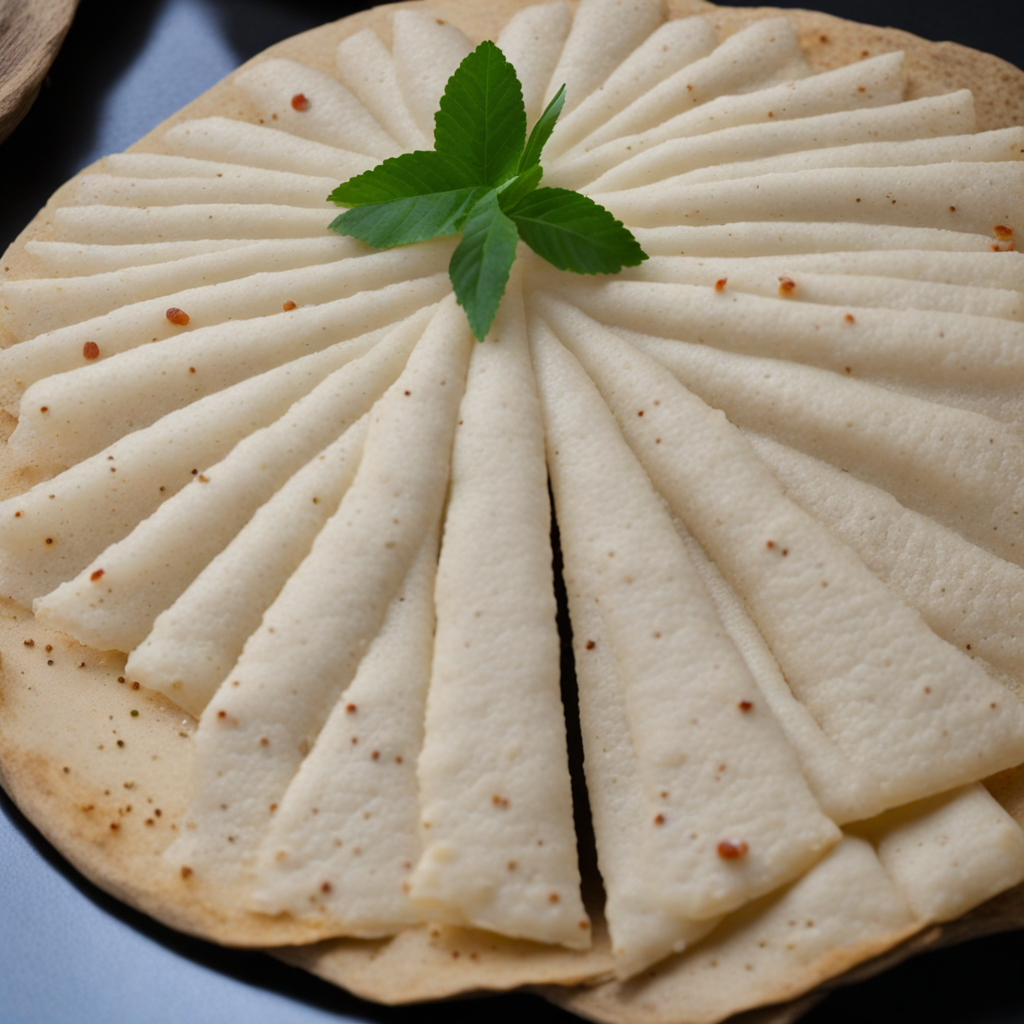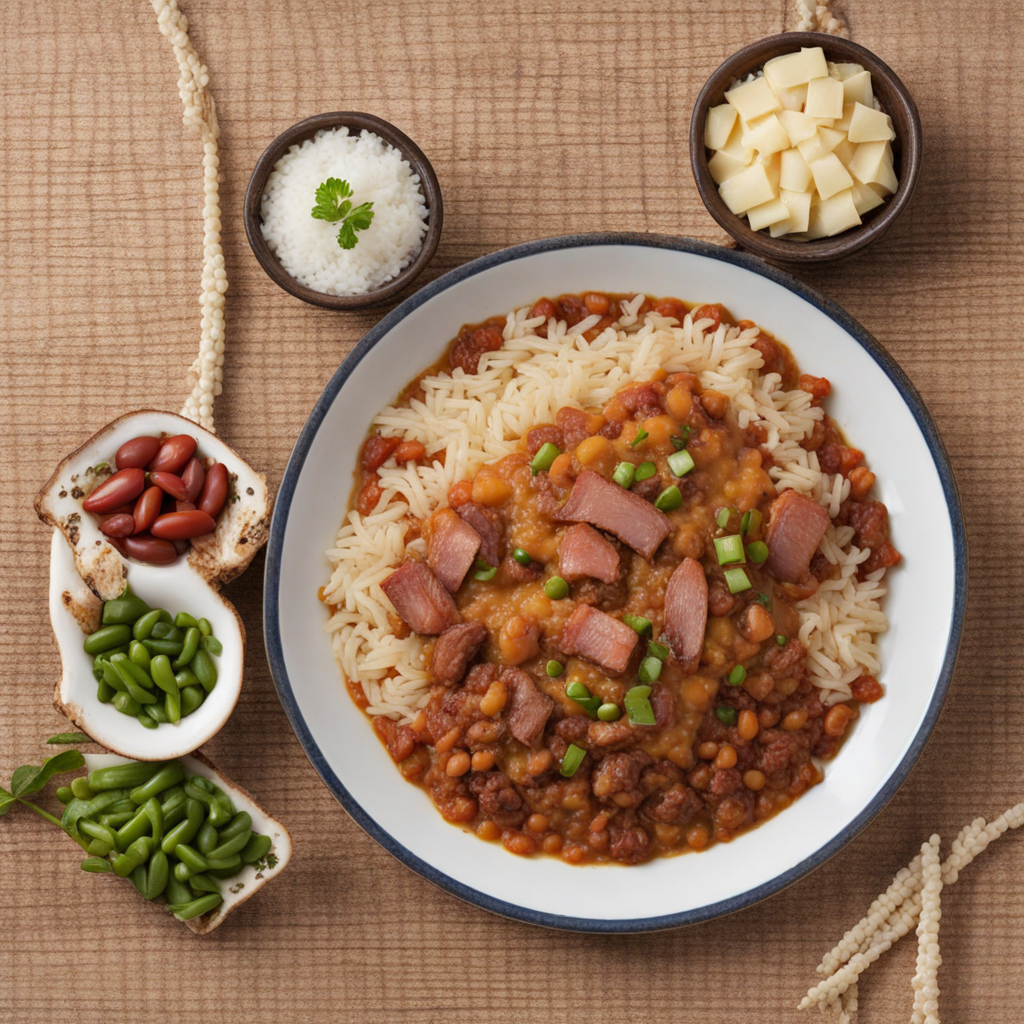Coxinha
Coxinha is a beloved Brazilian snack that offers a delightful burst of flavor and texture. Originating from the streets of São Paulo, this savory treat is shaped like a small drumstick, symbolizing its name, which translates to "little chicken leg" in Portuguese. The outer layer is made from a smooth, doughy mixture of wheat flour and chicken broth, which is cooked to perfection before being filled with a savory filling primarily composed of shredded chicken and spices. The dough is then molded into a teardrop shape, giving it its iconic appearance, and is often coated in breadcrumbs before being deep-fried to a golden brown. When you take a bite of coxinha, you're met with a satisfying crunch from the crispy exterior, followed by the warm, tender filling that bursts with flavor. The filling is typically seasoned with onions, garlic, and fresh herbs such as parsley or cilantro, which elevate the taste profile and provide a delightful contrast to the rich, buttery dough. Each coxinha can vary slightly in flavor depending on regional ingredients or personal family recipes, but the comforting essence of the chicken filling remains a constant that resonates with many Brazilians. Coxinha is often enjoyed as a snack or appetizer and is a staple at parties and celebrations. It pairs beautifully with a variety of dipping sauces, such as spicy salsas or creamy dips, making it a versatile option for any gathering. Whether you're discovering it from a street vendor or a local restaurant, coxinha promises a unique taste experience that encapsulates the heart and soul of Brazilian cuisine, inviting you to savor a little piece of this vibrant culture.
How It Became This Dish
The History of Coxinha: A Brazilian Culinary Icon Coxinha, an emblematic Brazilian snack, has captured the hearts and palates of many since its inception. This delicious, crescent-shaped treat is filled with shredded chicken and enveloped in a dough that is typically made from wheat flour, butter, and chicken broth. The coxinha is then coated in breadcrumbs and deep-fried to a golden perfection. To understand the true essence of coxinha, one must delve into its origins, cultural significance, and its evolution through the years. #### Origins: A Culinary Legend The exact origins of coxinha are somewhat veiled in culinary folklore, which is not uncommon for traditional dishes. Most food historians trace its roots back to São Paulo in the late 19th century. There is a popular legend that coxinha was created by a chef working for a wealthy family. The story goes that the chef was tasked with preparing a meal for the family's son, who had a penchant for chicken. When the son fell ill, the chef concocted a dish to appease his taste buds, using shredded chicken and a dough that resembled the shape of a chicken drumstick. Thus, coxinha was born. The name "coxinha" itself is derived from the Portuguese word "coxa," which means "thigh" or "drumstick." This nomenclature hints at the dish's chicken-centric filling and its resemblance to a small chicken leg. Initially, coxinhas were a luxury item reserved for the upper class, but as the dish gained popularity, it spread to the working class, becoming a staple street food item throughout Brazil. #### Cultural Significance: A Symbol of Brazilian Identity Coxinha has transcended its humble beginnings to become a symbol of Brazilian culture. It is not merely a snack; it embodies the warmth of Brazilian hospitality and the country's rich culinary heritage. Found at street vendors, bakeries, and restaurants alike, coxinha is a ubiquitous presence at parties, gatherings, and celebrations. It is often served alongside other traditional Brazilian snacks, such as pastéis (fried pastries) and empadas (savory pies), and is frequently accompanied by dipping sauces like spicy ketchup or creamy mayonnaise. The significance of coxinha extends beyond its flavor; it represents the melding of indigenous, African, and Portuguese culinary traditions that characterize Brazilian cuisine. The dish exemplifies the creativity and adaptability of Brazilian cooks, who have transformed simple ingredients into a beloved delicacy. As Brazil’s culinary scene has evolved, so too has coxinha, reflecting the diverse influences that make up the nation’s identity. #### Development Over Time: Variations and Innovations As coxinha gained traction, regional variations began to emerge, each with its own unique twist on the traditional recipe. For instance, in the state of Minas Gerais, coxinhas might be filled with cheese or even a combination of chicken and cheese, catering to local tastes and preferences. In the northeast, some versions incorporate spices and flavors that are characteristic of the region’s cuisine, such as dendê oil and coconut milk. Another interesting evolution in the coxinha’s story is the introduction of alternative fillings. While the classic shredded chicken remains a favorite, modern interpretations have seen the incorporation of various ingredients, including vegetables, mushrooms, and even seafood. This adaptability speaks to the dish's enduring popularity and its ability to cater to different dietary preferences, including vegetarian and vegan options. Moreover, the cooking method has also evolved. While deep frying is the traditional approach, health-conscious cooks have experimented with baking or air-frying coxinhas, allowing for a lighter version of this beloved snack without sacrificing flavor. These innovations have contributed to the coxinha's ongoing relevance in a rapidly changing culinary landscape. #### The Global Reach of Coxinha In recent years, coxinha has transcended Brazilian borders, gaining popularity in international markets. Brazilian expatriates have introduced coxinha to countries around the world, from the United States and Canada to Japan and Europe. Brazilian restaurants and food trucks often feature coxinha on their menus, appealing to both those familiar with the dish and newcomers eager to explore Brazilian cuisine. Social media platforms have played a significant role in this global spread. As food enthusiasts share images and recipes, coxinha has garnered attention beyond its traditional audience, sparking curiosity and interest in Brazilian culture. This newfound visibility has led to culinary fusions, with chefs experimenting with flavors and presentations, further enriching the coxinha legacy. #### Conclusion: A Culinary Treasure Coxinha is more than just a delicious snack; it is a testament to Brazil’s rich culinary history and cultural diversity. From its humble origins in São Paulo to its status as a beloved street food across the nation and beyond, coxinha has evolved while maintaining its core identity. It reflects the creativity and adaptability of Brazilian cuisine, showcasing how traditional recipes can be reimagined to meet contemporary tastes. As coxinha continues to delight taste buds and bring people together, it stands as a symbol of Brazilian hospitality and cultural pride. Whether enjoyed at a lively festa, a casual gathering, or a cozy street vendor, coxinha remains a cherished culinary treasure that tells the story of Brazil’s past while embracing its future. Its journey from a simple creation for a sick child to a global sensation encapsulates the beauty of food as a cultural connector, reminding us of the shared experiences and stories that unite us through the act of eating.
You may like
Discover local flavors from Brazil







